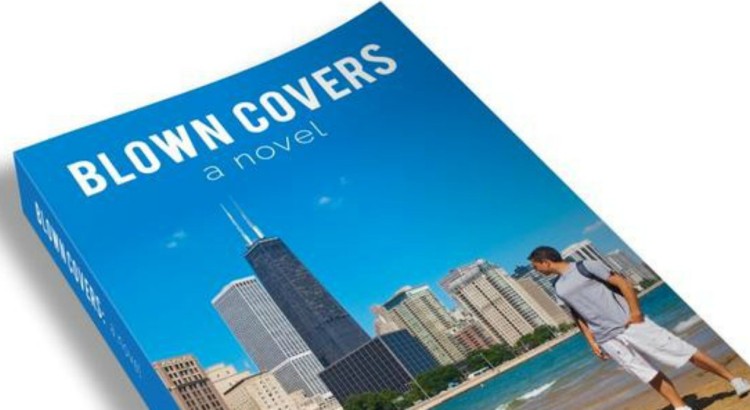 “Finally! I get to read more than the first few chapters!” I exclaimed when a close friend of mine (Ryan Thomas) sent me the novel he’d been working on since college. I start reading the first few pages of Blown Covers and then I only emerge when day has turned into night, weekend into Monday, and everything I loved has turned into ashes in my mouth because the main character–*doesn’t add spoiler*.
“Finally! I get to read more than the first few chapters!” I exclaimed when a close friend of mine (Ryan Thomas) sent me the novel he’d been working on since college. I start reading the first few pages of Blown Covers and then I only emerge when day has turned into night, weekend into Monday, and everything I loved has turned into ashes in my mouth because the main character–*doesn’t add spoiler*.
Blown Covers, the coming of age story that follows three teens sharing an apartment while working the same literary internship, is something I wish I had read when I was younger. Written in three languages (and translated into English), it takes us through the trials of David (White American-Enlgish), Chrstiano (Spanish-Spanish), and Lena (German-German) as they deal with their inner turmoil and each other.
I sat down with the author Ryan over coffee (several thousand miles apart) and asked him to talk more about the book and his role as its author.
So what was your process in writing Blown Covers?
The first part of my process is figuring out the names. Whether the meaning is important to myself or just important in general or to the story. I look through etymology searches and decide if I like it or not. I decide based on popular usage, connotations, and all of that stuff because the names are a really important part to me. They give you an idea of who the character is and what his or her motivations are.
Then I go on to create a page-long or more biography about each of the main characters–their families, friends, educational background, what gets them up in the morning. Then I outline. For a short story this isn’t that crucial. With a longer piece, it eventually gets lost if you just aimlessly walk around and write.
Then I found motivational music: From Rhapsody in Blue to write the building.. German music, Spanish music, whatever really came to mind for the scene that was really motivational for the beginning. And I tried to write no least than 10 pages per chapter for the first draft. And once I got the main storyline consolidated, I spent the better part of two years editing the crap out of it.
Without giving away the plot, how do you relate to each of the characters?
A lot of my friends who have read this don’t think the story is about me or adjacent to me in any way but they’ve literally said “this story is you”. The reason for that is because the characters at their initial stages of the book are all stereotypes. They’re all parts of a personality but not a whole. But as the story goes on, you see how much those stereotypes don’t work to actually define a person. That they’re actually quite annoying when you experience them.
Most people would say that I’m reflected most in the character of David because of his religious background, but I would completely disagree. Because I feel each of the characters really does represent a part of who I am: The neuroses of Lena, the off-the-wall-ness of Christiano.. Initially they do really represent me as a person, but then, as the story goes on, they become their own characters in their own rights with personality traits and identity struggles that we’ve all dealt with.
That’s when they become individuals and not just individual parts of another person’s personality.
Sage: Having heard that, it puts a lot into perspective. It’s funny because as I began reading, I was thinking ‘OMG I don’t like any of these characters!’ and then mid-way through the book they start growing on me and I think that’s a real testament to your writing.

Why did you set the story in Chicago?
At the time it was the biggest city that I knew best that also had an international background and culture clash. It made sense because it’s super segregated ethnically like a lot of American cities. It has a lot of ethnic neighborhoods with people that don’t really wander outside of their “place.”
I wanted to show this from the side of the immigrant but also from the majority side of “incumbants” who might not see eye to eye with newcomers, and the hypocricy. Honestly though, if I didn’t use location-specific markers, it could have easily been a generic American city.
Who is your intended audience?
As an author, everyone!
But I tried to make it most accessible to Millennials who aren’t really privvy to discussions about different identities. I want to not slam folks over the head with political and cultural commentary, but instead ease readers into thinking about identities they might not even try to understand otherwise.
I definitely don’t claim to be the best teacher or authority, but I think it’s a great starting point for folks who haven’t given it any thought yet.
Buy the Book!
From the U.S.
From the U.K.
Also available everywhere amazon is available (including Germany, Italy, Spain, France, India, Australia, japan, and Brazil)
